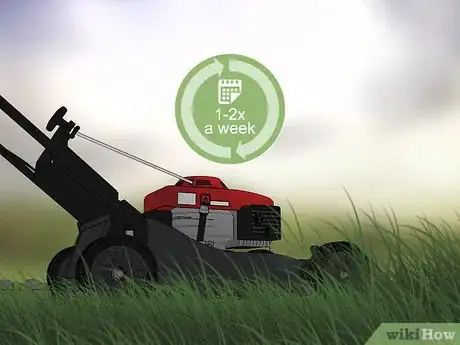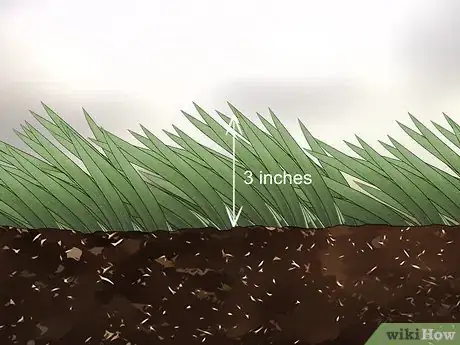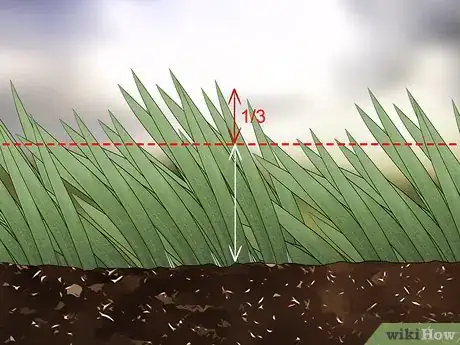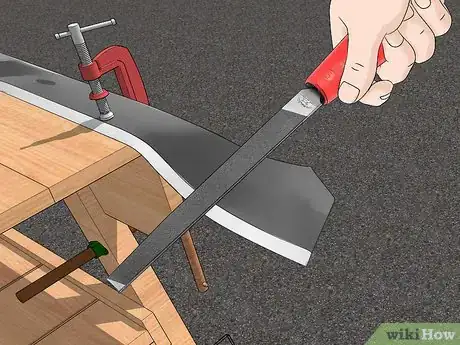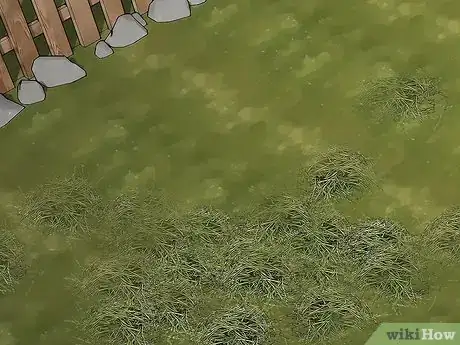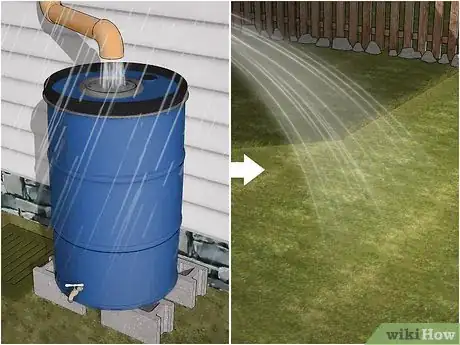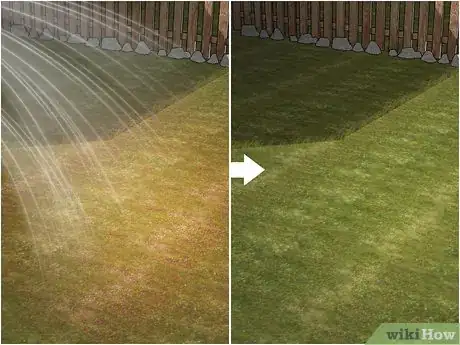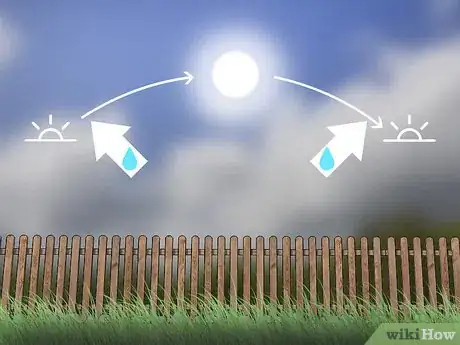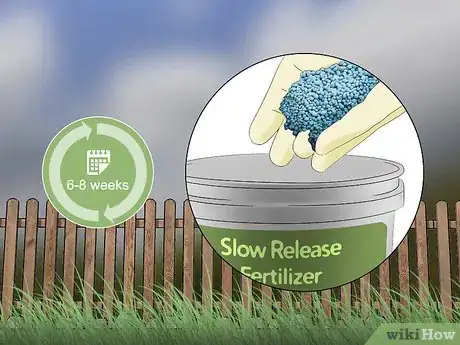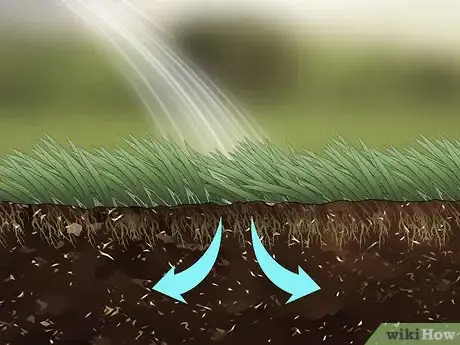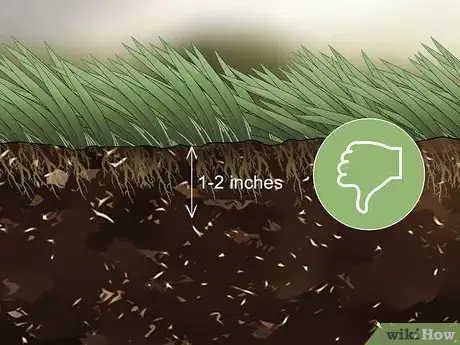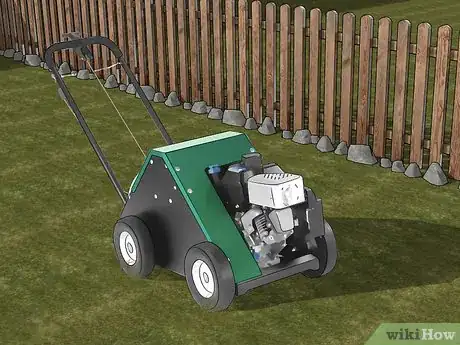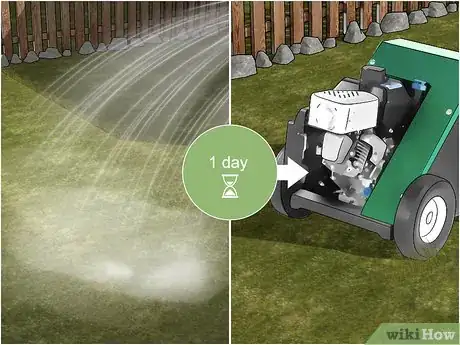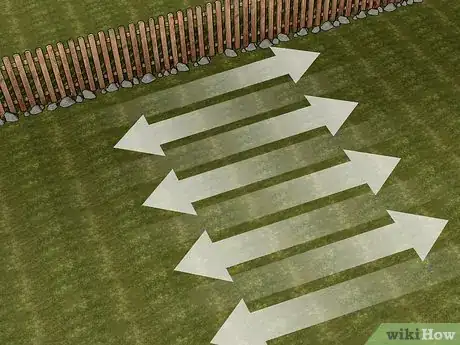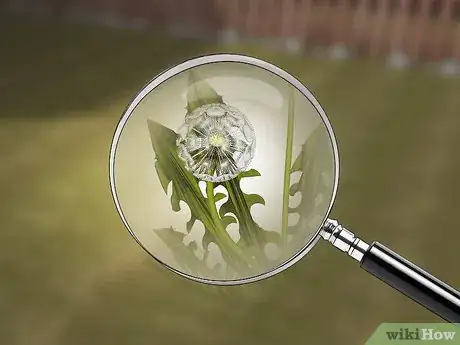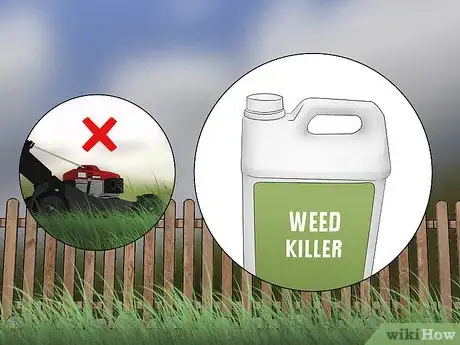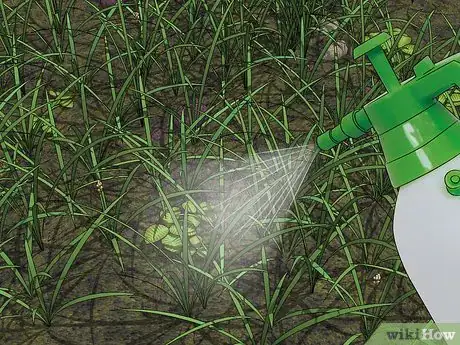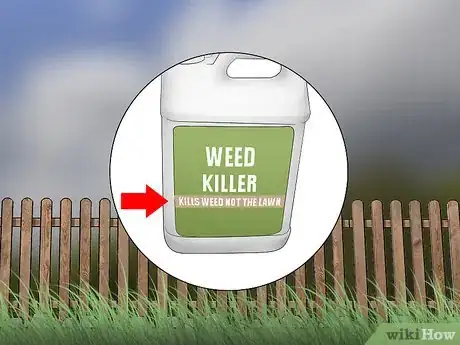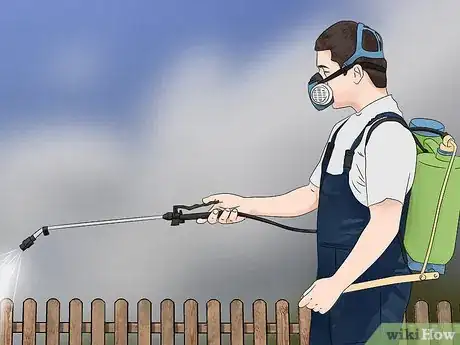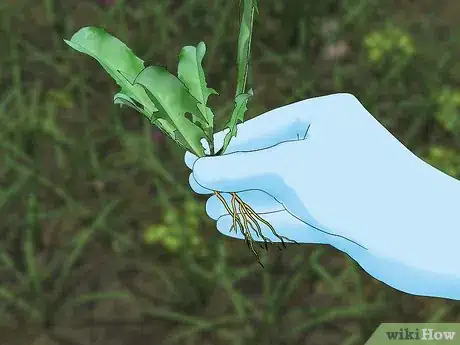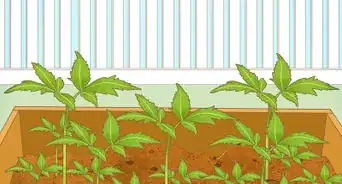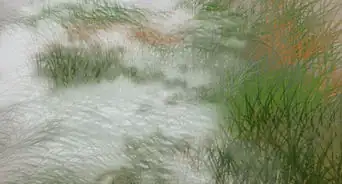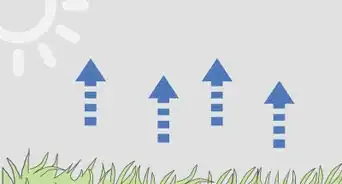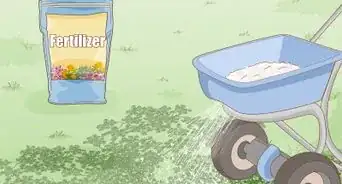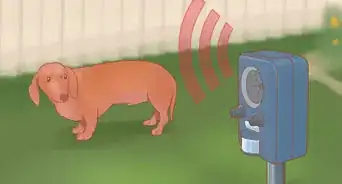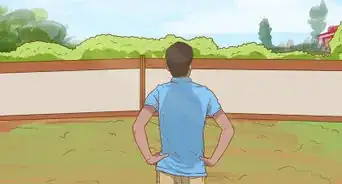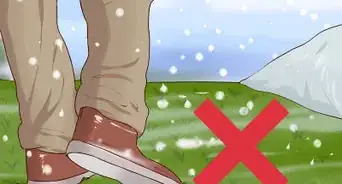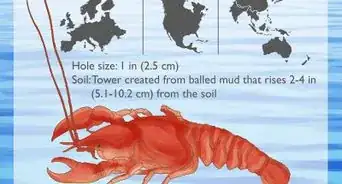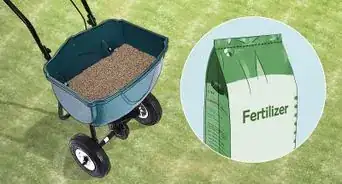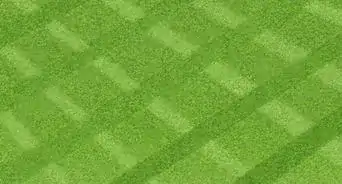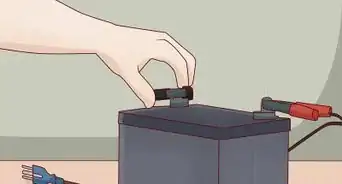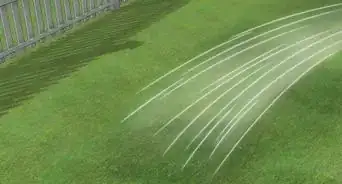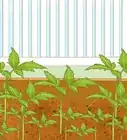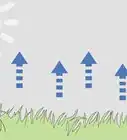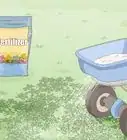This article was co-authored by Ben Barkan. Ben Barkan is a Garden and Landscape Designer and the Owner and Founder of HomeHarvest LLC, an edible landscapes and construction business based in Boston, Massachusetts. Ben has over 12 years of experience working with organic gardening and specializes in designing and building beautiful landscapes with custom construction and creative plant integration. He is a Certified Permaculture Designer, is licensed Construction Supervisor in Massachusetts, and is a Licensed Home Improvement Contractor. He holds an associates degree in Sustainable Agriculture from the University of Massachusetts Amherst.
There are 12 references cited in this article, which can be found at the bottom of the page.
This article has been viewed 35,466 times.
Summer is the peak growing season for your lawn, which means that it needs some extra attention during this time. Aside from mowing your lawn, you will need to ensure that your lawn gets the right amount of water. You will also need to attend to your lawn’s soil fertility and weed control. By using some simple strategies, you can have a beautiful lawn all summer long!
Steps
Mowing Your Lawn
-
1Mow your lawn once or twice a week. Mowing your lawn regularly is one way to keep it in good health. Mow your lawn twice a week if you have been getting the usual amount of rain for your area, and once per week if your area has been experiencing a drought.[1]
-
2Keep your lawn at about 2.5 to 3 inches (6.4 to 7.6 cm). This is an ideal height for most types of grasses. Measure your grass with a ruler to check the height.[2]
- If you prefer your lawn to be a little shorter or taller, that is fine, too.
Advertisement -
3Cut no more than one-third of the total growth each time you mow. It is important to avoid cutting the grass too short, especially when the weather is very hot. During hot weather, your lawn has to put a lot of energy into regrowing grass shoots.
- For example, if the lawn is 6 inches (15 cm) tall, then cut no more than 2 inches (5.1 cm).
- Even if your lawn is growing quickly, don't cut more than one-third of the growth. Cut it more often, such as twice per week instead of once per week.
-
4Sharpen the blade in your mower if it is dull. You can check the ends of the grass after mowing your lawn to determine if your mower blade is dull or sharp. If the ends of the grass look yellow or white, then your mower blade is likely dull. Take the blade to a hardware store to get it sharpened.[3]
- You can sharpen a lawnmower blade yourself, but you will need some special tools and mechanical knowledge of lawnmowers, such as where the spark plug is located and how to remove it.[4] If you are not comfortable doing this yourself, then taking the blade to a professional is the safest option.
-
5Leave grass clippings on your lawn to fertilize it. A free, effective way to ensure that your lawn is getting the nutrients it needs to stay healthy is to leave grass clippings on the lawn after you mow. Don’t collect, rake up, or sweep the grass clippings into the streets. Just leave them where they fall as you mow.[5]
Watering and Feeding Your Lawn
-
1Use rainwater to water your lawn, if possible. Watering a lawn can use up a lot of water, especially if you are using processed tap water. Instead of using the hose, try to capture rainwater in a rainwater collection barrel and use this to water your lawn in the summer. Rainwater is soft, so it is ideal for watering your lawn and other plants and trees in your yard.[6]
- Get a food grade, 55 gallons (210 L) barrel that has a spigot at the bottom of it and place it outside to collect water when it rains.
- Skip watering after it rains because enough water will fall directly onto your lawn. Wait to use the rainwater until you hit a dry period.
- You can connect a hose to the spigot on the barrel and use the rainwater to water your lawn.
-
2Wait until your lawn starts to turn yellow or brown to water. If you have to water your lawn, water just enough to keep it from turning brown and avoid running sprinklers too regularly. For example, you could turn the sprinklers on for a full night once a week, rather than misting your lawn every night.
- Your lawn will usually recover from turning brown. Although, grass can turn yellow or brown quickly during dry periods, this does not mean the grass is dead or dying. It is only becoming dormant.[7]
-
3Water your lawn during the cooler parts of the day. Watering your lawn when the sun is shining or when it is hot will not do your lawn much good because the water will evaporate quickly. Water your lawn early in the morning or after the sun goes down. This will allow the grass to soak up the water before the sun dries it up.[8]
- For example, you could set your sprinklers to go off first thing in the morning, or water your lawn with a hose right before you go to bed at night.
- Watch the weather reports too and try to water your lawn on a day that is supposed to be cooler than other days.
-
4Apply a slow-release fertilizer to your lawn once every 6 to 8 weeks, if desired. Applying fertilizer to your grass is optional for a healthy lawn, but fertilizer can help to keep your lawn healthy. Choose a slow-release lawn fertilizer and follow the manufacturer’s instructions for how to apply it. Wait until the soil temperature reaches 55 °F (13 °C) to apply the first layer of fertilizer and then apply the fertilizer once every 6 to 8 weeks through the summer and into the fall.[9]
- Look for a granular fertilizer that you can just sprinkle onto the lawn.
Aerating Your Lawn
-
1Check the drainage of your lawn to see if aeration might be necessary. Aerating your lawn helps to improve the soil’s drainage, absorption of nutrients and oxygen, and rooting. It can also help to prevent the pesticides and fertilizers that you apply to your lawn from running off into the sewer or ending up in rivers, streams, and lakes. Some ways to tell if you need to aerate your lawn include:[10]
- The grass looks thin or patchy.
- The lawn is heavily used, walked on, or driven on.
- The soil is a heavy clay type.
- The thatch layer (combination of living and dead grass) of the lawn is more than 0.5 inches (1.3 cm) tall.
- The lawn is more than 1 year old. Do not aerate a newly seeded or sodded lawn.
-
2Dig up a patch of soil to check the root depth. If you are still unsure if you need to aerate your lawn, then dig up a 1 square foot (0.093 m2) section of lawn that is 6 inches (15 cm) deep. Then, measure the roots of the grass. If the grass is only 1 to 2 inches (2.5 to 5.1 cm) deep, then you should aerate your lawn.[11]
- Check the roots early in the summer because this is when they will be the longest during the season. The roots will gradually shrink as the summer goes on.
-
3Purchase or rent a mechanical core aerator. If you decide to aerate your lawn, the best way to do so is to purchase or rent a mechanical core aerator. A core aerator has hollow tubes or times that punch into the ground. Avoid aerators with solid tubes or spikes because these will compact the soil.[12]
- Core aerators are expensive to purchase and rent, so you may want to band together with your neighbors to rent one for a weekend. An aerator is a heavy duty piece of equipment, so you will also need some help using the machine, such as someone to help you transport it to and from your property.[13]
- You can always hire a landscaping company to aerate your lawn for you if you do not want to deal with the equipment yourself.
-
4Aerate when the lawn is moist, but not soaking wet. Water your lawn thoroughly, and then wait a day or two after watering your lawn to aerate the lawn. The lawn should not be soaking wet, but it should be moist to get the best results. If your area has been experiencing excessive or prolonged rainy weather, then you may need to wait until the soil dries to aerate it.[14]
- Before you aerate, the lawn needs 1 inch (2.5 cm) of watering to ensure it is moist. Measure down into the soil to make sure that the moisture extends down by 1 inch (2.5 cm) and then wait 1 to 2 days before aerating.
-
5Go over your lawn multiple times in different directions. It is important to go over your lawn several times with the aerator to ensure that you end up with at least 20 to 40 holes for every 1 square foot (0.093 m2).[15] Also, do not aerate the lawn in 1 direction only. Go back and forth across the lawn so that each section of your lawn is aerated from at least 2 different directions. This will help to improve the air, water, and nutrient flow of the lawn.[16]
- For example, you could aerate the lawn in straight lines going from left to right, and then aerate over those lines again going from right to left.
Dealing with Weeds
-
1Identify weeds in your lawn by sight. You’ll be able to spot lawn weeds if you notice flowers (especially dandelions) growing out of your lawn. You might also see the lawn has slightly inconsistent patches where the color or texture looks different than the rest of the lawn.[17]
- Keep in mind that it is easier to spot weeds if the lawn hasn’t been mowed recently.
- You can look up common weeds online and look at picture to help you identify the type of weed you are dealing with. This may be helpful if you are dealing with something invasive or persistent, or if you’d just like to know what weeds are common to your lawn.[18]
-
2Refrain from mowing the lawn before applying weed killer. If using a targeted weed killer, make the job easier for yourself by applying it when the lawn hasn’t been mowed in a while. Doing this will help you to spot the problem areas, as weeds are easier to see when the lawn has been allowed to grow out a bit.[19]
- At the same time, try to avoid mowing right after you have spread your weed killer. Wait a day or two to allow the weed killer to spread through the entire weed.
-
3Sprinkle or spray the weed killer in the morning when the lawn is dewy, but not wet. Don’t apply weed killer when the soil is very dry or very wet. Try to apply a weed killing chemical when the soil isn’t too dry, such as in the morning when the lawn is dewy.[20]
- Avoid spraying weed killer on your lawn right after a heavy rainfall or if it is supposed to rain that day or the following day.
-
4Choose a weed killer that is meant for use on lawns. When you choose a weed killer, look for a product that is meant for use on lawns and that will not kill your lawn. Read and follow the package’s instructions carefully.[21]
- Avoid using “weed and feed” products. These might not work for your lawn type and they may even cause damage.[22]
- Alternately you can try targeting the individual weeds you spot. This targeted weed killer usually comes in a spray or gel form.
-
5Apply a chemical weed killer when weeds are actively growing. When you notice multiple broadleaf weeds in your yard, this is a good time to apply a granular weed killer or to spray the individual weeds. Apply the granular or spray weed killer directly to the weeds.[23]
- Try to avoid applying weed killer right at the end of summer as weeds may be going dormant and a weed killer may be less effective.
- You may need to apply weed killer once in early summer and once later in the summer.
-
6Try digging up the weeds as an alternative to using weed killer. If you prefer to avoid using chemicals then you can try digging up the weeds you spot. To do this, you can use a variety of tools, including a hori hori blade or a weed puller. Use a garden spade to dig down into the roots of the weed and pull the whole weed out, roots and all. You can also put on a pair of gardening gloves and pull weeds by hand.[24] [25]
- Pulling weeds by hand is time consuming, but you may prefer this option if you do not want to spray chemicals on your lawn due to children and pets playing on the lawn.
- You can slow down the growth of some weeds, like dandelions, simply by removing their heads. Tear them off by hand or mow over them.[26] You may need to do this several times over the summer, however, to keep them from growing back.
- Believe it or not, mowing is a type of weeding—you're just keeping all of the plants under a certain size.[27]
Expert Q&A
-
QuestionHow do I keep my lawn healthy in the summer?
 Jeremy YamaguchiJeremy Yamaguchi is a Lawn Care Specialist and the Founder/CEO of Lawn Love, a digital marketplace for lawn care and gardening services. Jeremy provides instant satellite quotes and can coordinate service from a smartphone or web browser. The company has raised funding from notable investors like Y Combinator, Joe Montana, Alexis Ohanian, Barbara Corcoran and others.
Jeremy YamaguchiJeremy Yamaguchi is a Lawn Care Specialist and the Founder/CEO of Lawn Love, a digital marketplace for lawn care and gardening services. Jeremy provides instant satellite quotes and can coordinate service from a smartphone or web browser. The company has raised funding from notable investors like Y Combinator, Joe Montana, Alexis Ohanian, Barbara Corcoran and others.
Lawn Care Specialist Take care of your lawn by mowing high, which means cutting off only the upper tips of the grass blades. This protects your yard from the heat and sun and helps the soil maintain its moisture levels.
Take care of your lawn by mowing high, which means cutting off only the upper tips of the grass blades. This protects your yard from the heat and sun and helps the soil maintain its moisture levels. -
QuestionHow often should you water your grass in the summer?
 Maggie MoranMaggie Moran is a Professional Gardener in Pennsylvania.
Maggie MoranMaggie Moran is a Professional Gardener in Pennsylvania.
Home & Garden Specialist It is best to water 2 or 3 times per week, as early as possible in the morning. A good test is to use a 6" screwdriver and push it into the ground. If it isn't done easily, you aren't watering enough.
It is best to water 2 or 3 times per week, as early as possible in the morning. A good test is to use a 6" screwdriver and push it into the ground. If it isn't done easily, you aren't watering enough. -
QuestionCan you fertilize your lawn in summer?
 Maggie MoranMaggie Moran is a Professional Gardener in Pennsylvania.
Maggie MoranMaggie Moran is a Professional Gardener in Pennsylvania.
Home & Garden Specialist It isn't recommended that you fertilize in the summer. If you apply fertilizer in the summer heat, you can cause the lawn to burn.
It isn't recommended that you fertilize in the summer. If you apply fertilizer in the summer heat, you can cause the lawn to burn.
References
- ↑ https://www.rhs.org.uk/advice/profile?PID=425
- ↑ http://extension.illinois.edu/lawntalk/planting/guidelines_for_mowing_lawns.cfm
- ↑ https://www.mwmo.org/learn/stormwater-101/what-you-can-do/lawn-care/
- ↑ https://www.familyhandyman.com/automotive/lawn-mower-repair/lawn-mower-blade-sharpening/view-all/
- ↑ https://www.mwmo.org/learn/stormwater-101/what-you-can-do/lawn-care/
- ↑ https://www.mass.gov/guides/rain-barrels-and-other-water-conservation-tools
- ↑ https://www.mwmo.org/learn/stormwater-101/what-you-can-do/lawn-care/
- ↑ https://www.mwmo.org/learn/stormwater-101/what-you-can-do/lawn-care/
- ↑ https://www.popularmechanics.com/home/lawn-garden/how-to/g237/the-quick-and-easy-guide-to-fertilizing-your-lawn/
- ↑ http://pubs.ext.vt.edu/content/dam/pubs_ext_vt_edu/430/430-002/430-002_pdf.pdf
- ↑ http://pubs.ext.vt.edu/content/dam/pubs_ext_vt_edu/430/430-002/430-002_pdf.pdf
- ↑ https://www.extension.iastate.edu/news/yard-and-garden-properly-aerating-lawns
- ↑ http://pubs.ext.vt.edu/content/dam/pubs_ext_vt_edu/430/430-002/430-002_pdf.pdf
- ↑ http://pubs.ext.vt.edu/content/dam/pubs_ext_vt_edu/430/430-002/430-002_pdf.pdf
- ↑ https://www.extension.iastate.edu/news/yard-and-garden-properly-aerating-lawns
- ↑ http://pubs.ext.vt.edu/content/dam/pubs_ext_vt_edu/430/430-002/430-002_pdf.pdf
- ↑ https://www.rhs.org.uk/advice/profile?PID=369
- ↑ https://extension.umd.edu/hgic/lawns/lawn-weed-identification
- ↑ https://www.rhs.org.uk/advice/profile?PID=369
- ↑ https://www.bhg.com/gardening/yard/lawn-care/lawn-care-for-beginners/
- ↑ https://www.rhs.org.uk/advice/profile?PID=369
- ↑ https://www.mwmo.org/learn/stormwater-101/what-you-can-do/lawn-care/
- ↑ https://www.bhg.com/gardening/yard/lawn-care/lawn-care-for-beginners/
- ↑ https://www.rhs.org.uk/advice/profile?PID=369
- ↑ Ben Barkan. Garden & Landscape Designer. Expert Interview. 14 April 2020.
- ↑ Ben Barkan. Garden & Landscape Designer. Expert Interview. 14 April 2020.
- ↑ Ben Barkan. Garden & Landscape Designer. Expert Interview. 14 April 2020.
About This Article
To care for your lawn in the summer, make sure to mow it twice a week, and cut the grass to around 3 inches tall to keep it in good health. Additionally, leave the clippings on the grass after you mow to help fertilize the lawn. Then, water your lawn once a week in the early morning or late evening, so that the water can soak in to the roots before the sun dries it. Alternatively, turn your sprinklers on for a full night once a week. For more tips from our Horticulture reviewer, including how to aerate your lawn to improve drainage, read on!
